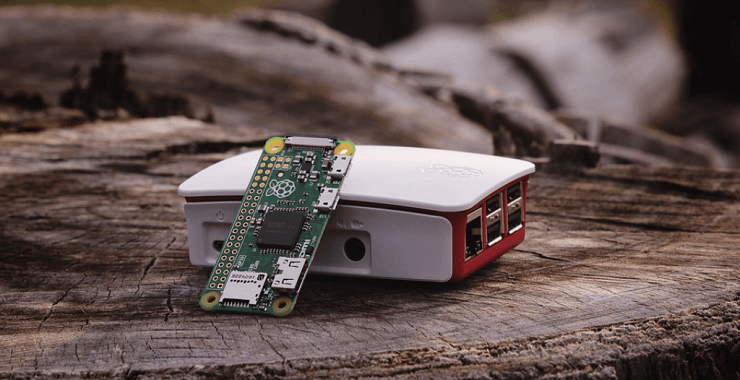Building Internet of Things (IoT) with Raspberry Pi
- by BLE Mobile Apps

“Raspberry Pi – Helping you to fine tune your software”
As the world is getting technologically forward, IoT is coming to our personal lives blurring the digital and physical space. But when we talk about IoT in home automation and industrial process monitoring system, it makes the use of PC-based servers. Hence it becomes necessary to keep sever on all the time which ultimately increase the cost of system. The solution for this problem is to use embedded web server instead of PC based server which can have single chip implementation of Ethernet networking standards. And this can be achieved by using Raspberry Pi. By embedding Ethernet onto the device, it has the competency to interconnect via Ethernet without using PC; the server enables web access to automate and monitor the system and provides mountable networking solution that is enhanced for instrumentation and industrial automation.
What is Raspberry Pi All About?
It is a low cost, low-power, credit-card sized computer that plugs into a computer monitor or TV and uses standard keyboard and mouse to compute from browsing the internet and playing high-definition video to making spreadsheets, word processing and playing games.
Working
It is more like complete Linux computer but slower than modern desktop or laptop and enables people of all ages to learn how to program in languages like scratch and python. Due to its affordable price and compact size, it has been adopted by professionals, college students and many more. The best thing about Raspberry Pi is that even with the minimum knowledge of coding; anyone can program it in a way they like.
There are two ways to connect Raspberry Pi to other devices, wired and wireless sources. The wired source can be connected through HDMI, VGA, USB cables etc. and the wireless source could be connected using Bluetooth devices, closed controlled networks like NFC devices or wide-range Wi-Fi or internet services. It is connected to the other devices through integrated circuits or the GPIO and can be used to get desired output after coding. Once the goal of the device is finalized, software apps like MATLAP, Java, Eclipse etc. are used to program the apps accordingly.
Advantages
- Less Power Consumption
- No moving parts
- Small form factors
- No noise
- Status lights
- Expansion capabilities
- Built-in HDMI capable graphics
- Affordable
- Huge community support
- Over locking capability
- Multiple uses
How Raspberry Pi is Used in Application?
- Collecting Data: It bridges the gap between physical, human tasks and the need to collect and analyze the data. For instance: in a warehouse, workers create hundreds of batches by performing repetitive tasks and it is likely that errors will be caused! If an operator of the warehouse wanted to know how many batches worker creates, how long the batch takes to complete etc., it becomes difficult to get the proper data. Even the log of a perfect employee who never makes mistakes, have to be manually entered into a spreadsheet to perform analytics wasting the precious time. If you come up with the Raspberry Pi solution, every task would be automated by just pressing the button and workers will no longer have the need to enter data manually and hence there are more chances of increasing productivity.
- Cloud Computing: If you rely on cloud computing, you can save much of the cost on powerful machines by using a Raspberry Pi device to access the cloud servers. A private cloud server can be set up in it which can be used as a storage device for the applications in which signals are used. Real time signals acquired by any sensor that measures environmental factors are analog in nature; so microcontrollers like Arduino can be used to measure analog signals that can be transmitted serially to the Raspberry Pi. Hence, it can be used as cloud server which serves as a storage device for real-time applications.
- Network Monitoring: Set up a Raspberry Pi to monitor your web servers! It would provide you deep insights into what’s going wrong, what’s correct and network dependencies. Additionally, you can check performance data and see trends which help you delve deep into routers, switches, firewalls and servers and understand what’s going on in your networks. To be precise, you can gain actionable insights on maintaining uptime for your networks and servers.
The Future
Since Internet of Things involves sensors, devices, cloud, data etc; when combined with Raspberry Pi can provide the right platform for experimentation. It can be used in:
- Weather security and temperature sensors
- Central controller for other low-powered controllers
- Media center with simply input/output variations
- Raspberry Pi internet doorbell and many more…
This is all about IoT using Raspberry Pi. As IoT evolves, there will be lot more connected devices providing additional security, analytics and management capabilities and this would help IoT to become more powerful in what it can help people to achieve.
The Bottom Line
Today, as low-power computer is gaining traction, it possesses ever evolving functions to give edge to businesses. It aimed to provide education to the school children, but now it is used to develop robotic movements of advanced robots. Today it provides range of opportunities to explore the unexplored and enabling the individual to think out of box.
We at BLE Mobile Apps help you to develop Raspberry Pi solutions that can cater your requirements to achieve your business goals. The team focuses on making bespoke solutions and thoroughly examines the requirements by designing and deploying app after in-depth discussion with all stakeholders.
Check Out a Few of the Related Posts Mentioned Below:
- Top Internet of Things (IoT) Trends to Watch Out For In 2018
- Blockchain: The Ultimate Game Changer for IoT Security
- How Internet of Things (IoT) Can Improve Your Business
- IoT Security – Making Internet of Things Safe
- Developing Sustainable IoT Mobile Apps for Connecting World
- Bluetooth 5 and The Internet of Things
- How IoT is Changing the World
- Using IoT to Offer Enhanced Customer Experience
